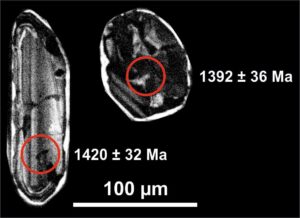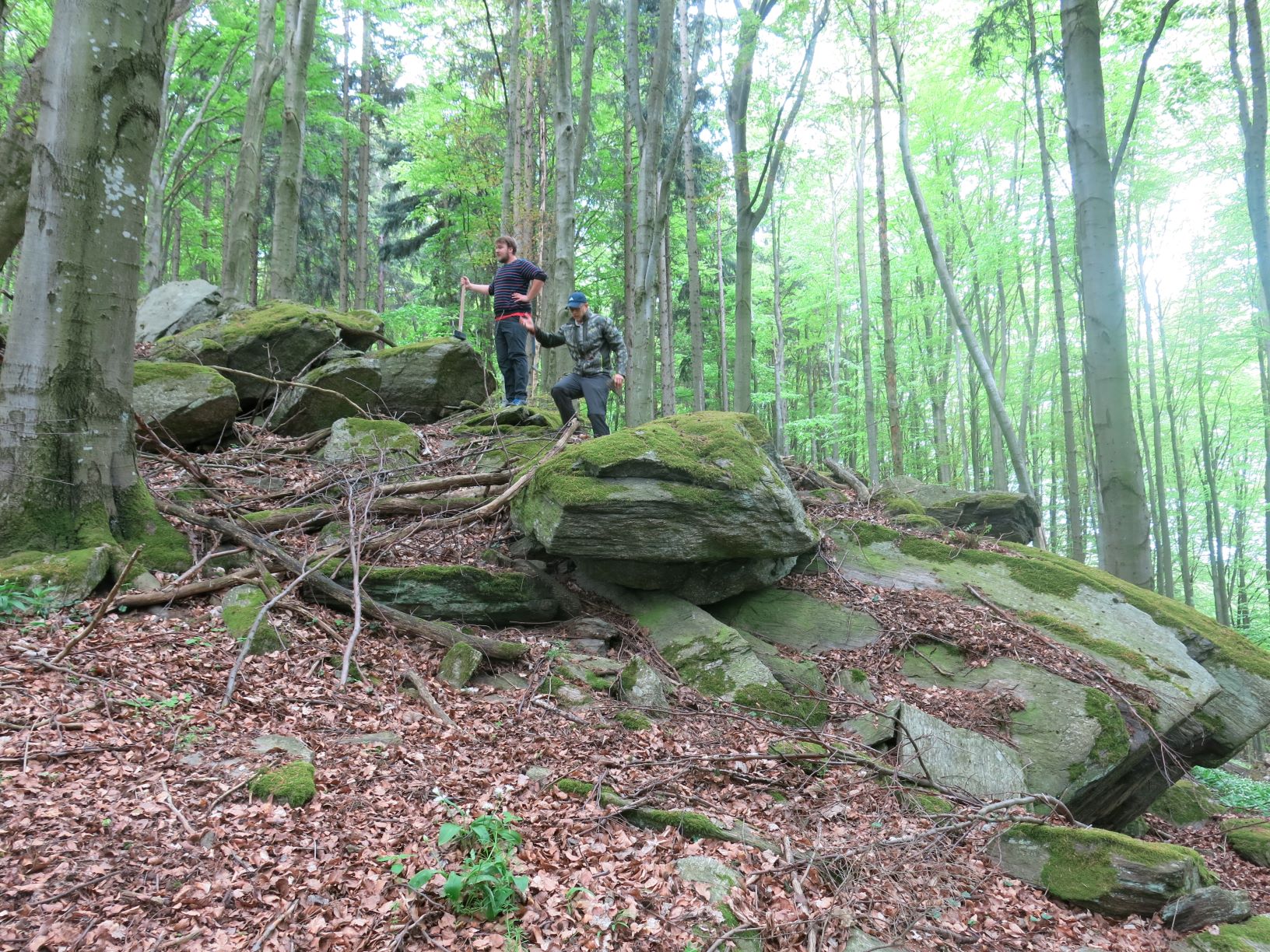THE OLDEST ROCK OF AUSTRIA – DISCOVERED AT THE UNIVERSITY OF SALZBURG
It has long been known that very old rocks exist in the Bohemian Massif, which stretches into northern Austria with the Daube carving out its lower boundary. The working group, led by Professor Fritz Finger from the Department of Chemistry and Physics of Materials at the University of Salzburg, has been researching these ancient crystalline rocks for many years. They have now succeeded in identifying the oldest rock ever found in Austria in the Waldviertel.
The success is a result of the master’s theses by Martin Lindner (Department of Chemistry and Physics of Materials) and Daniel Reither (Department of Geography and Geology). The spectacular age of the so-called Hauergraben Gneiss – around 1.4 billion years – could be determined with the help of U-Pb dating on zircon crystals. This analysis was carried out in collaboration with Dr. Wolfgang Dörr from the Goethe University Frankfurt and Prof. Christoph Hauzenberger from the University of Graz.
South American origin?
As shown in two new, highly regarded publications (Lindner et al. 2020, 2021), certain Waldviertel rocks (Drosendorf Unit) can be compared with Precambrian formations in South America (Amazonian Craton). As early as the Cambrian period, around 500 million years ago, these rocks were detached from the South American sector of the supercontinent Gondwana and shifted towards Europe (Baltica) by continental drift (terrane drift). During the Variscan mountain building (~420-250 million years ago), which ended in the formation of the supercontinent Pangea, these very old rocks came to arrive at their present tectonic position within the Bohemian Massif.
Zircons: hardy time capsules
Zircons are microscopically small crystals of zirconium silicate (ZrSiO4). They are found as accessories in many rocks and are extremely resistant to geological processes such as weathering or metamorphism. Due to these latter properties, they can outlast changes over long geological periods. By incorporating the radioactive element uranium, which decays to lead over time, zircons can be used to determine the age of rocks. Research on zircons is now in its third generation at the University of Salzburg and has led to many important scientific publications over the past decades. This work was started by the founder of the Geological Institute, Prof. Günther Frals (1924-2003). Today, as it was then, the tiny zircon crystals, usually between 100 and 300 µm in size, are examined under an optical microscope and classified according to their shapes.
The scanning electron microscope at the Department of Chemistry and Physics of Materials allows even more in-depth insights into the internal structures of the zircons. This allows the crystals to be examined and characterised in detail at very high magnifications before they are dated using laser ablation and U-Pb mass spectrometers. The measurement of uranium and lead isotopes is carried out in cooperation with the University of Frankfurt and the University of Graz.
____________________________________________
Links to the publications
https://sciendo.com/article/10.17738/ajes.2021.0002
https://sp.lyellcollection.org/content/503/1/185
Two of the dated zircon crystals
as scanning electron microscope images (cathodoluminescence). The red circles indicate the position of the laser spot. The numbers next to them indicate the individual ages in millions of years.

Image: © Martin Lindner





